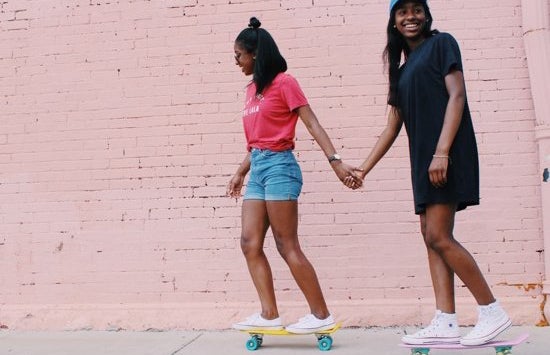Starting a new hobby always comes with its challenges. Elevating a small interest from novice to master level requires time, money, and dedication which every beginner skateboarder learns early on. Even the world-famous Tony Hawk had to start somewhere before landing double kickflips.
I am still new to skateboarding, but these past few months have taught me crucial steps that will guide your skating journey. However, I must preface that everybody learns at their own pace, so what worked with me may not suit your style. There are dozens of other YouTubers and blogs that provide valuable tips for novices and seasoned skaters.
Stage 1: Buying and starting
While it may not seem like it, this is by far the most difficult step. The intimidation of starting and not knowing where to start can deter many prospective skaters from even picking up the board. My tip is to just take that leap. Every day you postpone taking action is another missed opportunity to improve upon your skills and soon enough it will never happen.
Costs may also turn one off from learning to skateboard. This is why my first board was relatively cheap, so I had no excuse to not buy one. I bought from Magneto Skateboards because they offer good value for decently built products while also designing specifically for beginners. Once you feel confident enough to skate at the next level, I suggest going to a local skate shop and getting a higher-quality ride.
Stage 2: Feeling comfortable on the board
You finally took the initiative and bought a board perfect for you. Now what? Many people make the mistake of starting right at ollies or cruising, but it is important to know how to balance first. This is done by practicing standing on the board with two feet in grass or a carpet. You will begin to find the center of balance and can then level up to standing on flat concrete. After this, we are going to start pushing.
Stage 3: Getting a move on
It is time to start cruising! I would start by standing on the board while it slowly rolls across the ground or slightly steep ground that is enough to get you rolling. This allows you to get acclimated with moving and adjusting balance while cruising. Next is pushing.
Start with one foot on the front screws in a forward position, and with your other foot, push off the ground two or three times. It may be helpful to just balance on one foot for a few feet before full-scale cruising because right now it is important to get the motions down.
After practicing this a bit, place the pushing foot on the back screws and turn your other foot, so both feet should be standing parallel to the board. It doesn’t matter if you use right or left to push, whichever feels comfortable. One tip is to imagine yourself jumping and sliding on some ice. Whichever foot comes first is the one you place on the front screws.
Stage 4: Hit the brakes
The final step is knowing how to stop while moving. This could be done multiple ways but most place their pushing foot on the ground until the board comes to a halt. Another way is to gradually slow down by using your foot’s heel. The final resort is jumping off the board, to the side not front, if you’re about to wipe out.
Stage 5: Don’t give up
Maintaining this newfound skill also takes effort in itself. Try to skate whenever possible rather than walking and have some friends hold you to your progress. I found watching skateboarding videos motivates me to practice.
I can guarantee at some point, whether now or learning new tricks, that you will fall. Rather than seeing it as something to fear, embrace standing back up and showing your grit even with a skinned knee.
Good luck skaters!

